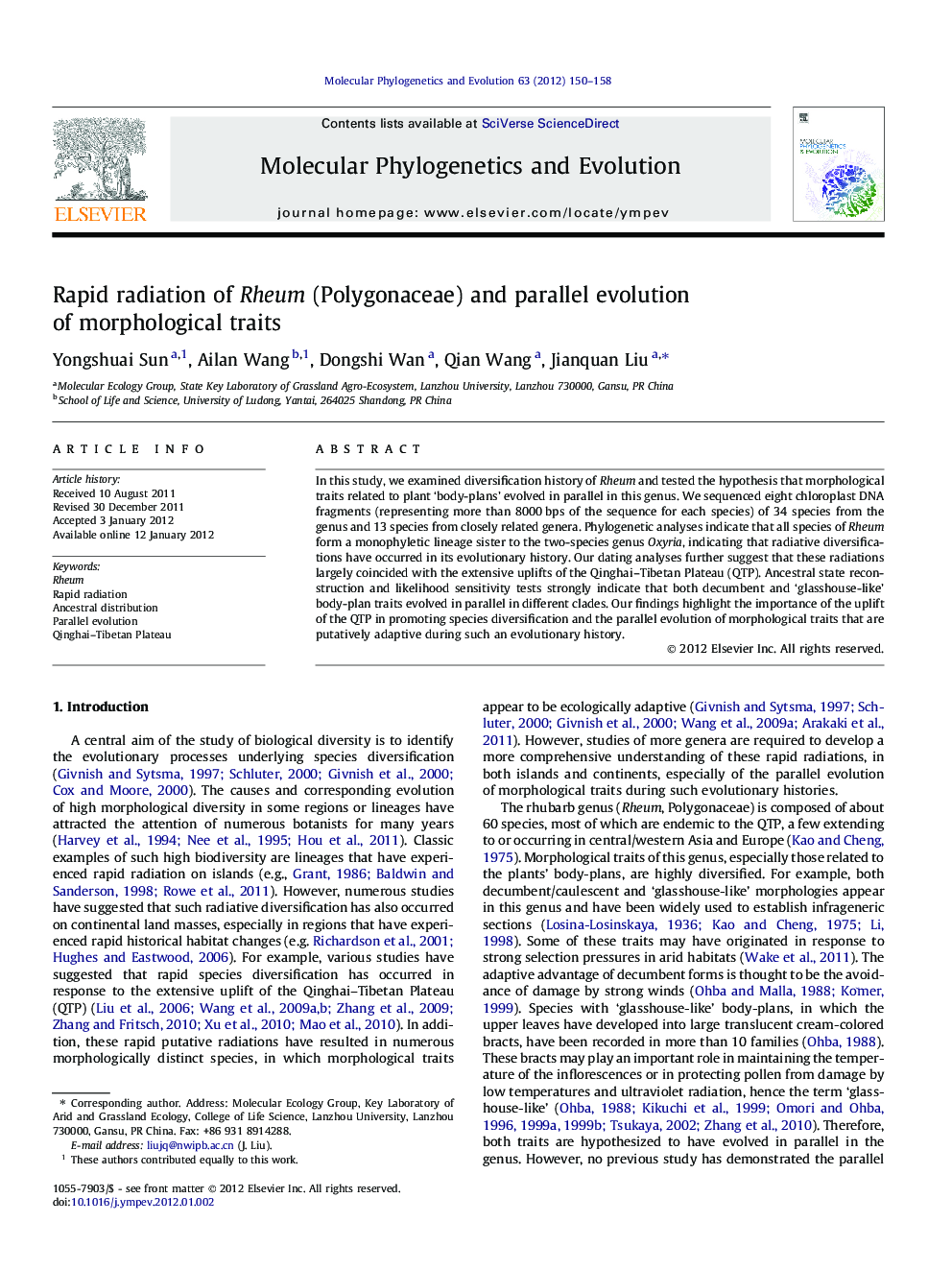| Article ID | Journal | Published Year | Pages | File Type |
|---|---|---|---|---|
| 2834171 | Molecular Phylogenetics and Evolution | 2012 | 9 Pages |
In this study, we examined diversification history of Rheum and tested the hypothesis that morphological traits related to plant ‘body-plans’ evolved in parallel in this genus. We sequenced eight chloroplast DNA fragments (representing more than 8000 bps of the sequence for each species) of 34 species from the genus and 13 species from closely related genera. Phylogenetic analyses indicate that all species of Rheum form a monophyletic lineage sister to the two-species genus Oxyria, indicating that radiative diversifications have occurred in its evolutionary history. Our dating analyses further suggest that these radiations largely coincided with the extensive uplifts of the Qinghai–Tibetan Plateau (QTP). Ancestral state reconstruction and likelihood sensitivity tests strongly indicate that both decumbent and ‘glasshouse-like’ body-plan traits evolved in parallel in different clades. Our findings highlight the importance of the uplift of the QTP in promoting species diversification and the parallel evolution of morphological traits that are putatively adaptive during such an evolutionary history.
Graphical abstractFigure optionsDownload full-size imageDownload as PowerPoint slideHighlights► We used eight cpDNA fragments to examine diversification history of Rheum. ► Rapid radiations occurred in the evolutionary history of the genus. ► These radiations coincided with the extensive uplifts of the Qinghai–Tibetan Plateau. ► Both decumbent and ‘glasshouse-like’ body-plan traits evolved in parallel during such rapid diversifications.
